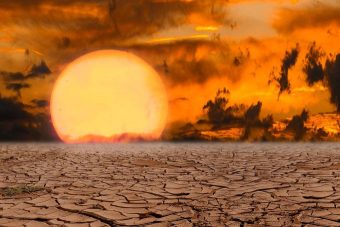
The number of days in which extreme heat occurs during the summer have been rising across the US — particularly in the Western states and on the Eastern seaboard — over recent decades, a new study from the Natural Resources Defense Council found.
To be more particular, the study found that nearly two-thirds of the US has dealt with far more days of extreme summer heat over the last decade than during previous decades, with the study relying on temperature data from thousands of US government weather stations throughout the US. The new analysis compared data taken between 2007–2017 and 1961–1990.
The work identified 21 states (along with the District of Columbia) that were particularly hard hit — these states were ones where at least 75% of the residents are now dealing with “at least nine more than expected extreme summer heat days annually.”
NRDC provides more: “Severe heat is the number one cause of U.S. weather fatalities. High summer temperatures can cause heat exhaustion and heatstroke or worsen preexisting cardiovascular and respiratory conditions. Research has shown that more than 65,000 people end up in U.S. emergency rooms each summer with heat-related illnesses and an estimated 1,300 additional deaths occurred annually during extreme summer heat across 40 major US cities from 1975 to 2004. …
“City residents face a heightened risk because of the urban heat island effect, caused by the mostly paved urban surfaces that absorb and re-radiate heat. A lack of green space and tree cover in urban areas can substantially raise temperatures compared to surrounding regions. An NRDC study from earlier this year found that large cities like New York, Philadelphia, Chicago, and Boston could each experience at least six times as many dangerously hot summer days by 2100 as they did, on average, from 1975 to 2010. The study also found that, collectively, 45 major urban areas in the United States could see about 28,000 more deaths each year due to extremely hot summer days by the 2090s.”
As you’ve probably already noted, the recent forest fires seen along the West Coast of the US were fueled by high temperatures and the aridity accompanying them. As it stands, Southern California is right now in something of a heatwave — a somewhat strange occurrence for an October.
California is, notably, one of the 11 Western states identified by the new study as being most affected by rising levels of extreme summer heat.
Source: cleantechnica.com



